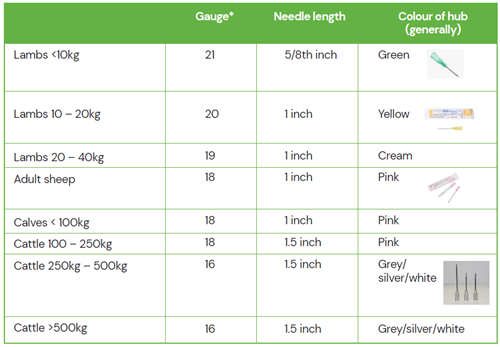Best Practices for Safe and Responsible Medicine Use During Calving and Lambing

Spring is fast approaching and with it for many of you calving and or lambing is now on the horizon. Preparation for lambing or calving is ideally done well in advance.
One area that is worthy of consideration is ensuring that you have adequate supplies in place. In the case of lambing/calving some examples are gloves, lubricant, navel treatment, medicines (after consultation with your vet) and needles/syringes.
Gloves are important to maintain hygiene if birthing assistance is required and will reduce the risk of introducing infection that then may require treatments and can even impact on the dam’s ability to get back in lamb/calf.
Effective navel treatment is important to reduce the risk of navel ill and joint ill. Maintaining hygiene for example ensuring lambing pens are cleaned out between ewes can also help reduce the risk of infection in the newborn and very young animals.
Medicines
Discuss with your vet what supplies you should have available. All medicine use should be responsible and appropriate. If a problem arises consider what measures can be taken to reduce this health risk in the future. Many issues can be prevented or reduced through improving the environment or other management factors and there are vaccines available for a wide range of diseases.
For any medicine use consider the five R’s:
- Right animal
- Right medicine
- Make sure it is stored correctly e.g. vaccines in fridge at 2-8 °C.
- Use before the expiry date and within the advised time of opening. Most products should be used within 28 days of first use, but vaccines are likely to within 12 hours of opening.
- If you are going to use more than one medicine, can they be used at the same time? Never mix medicines.
- Right route
- For injection this will be intramuscular IM or subcutaneous SC (under the skin) but there are also those given by mouth or applied topically for example eye ointments.
- Right dose
- Ideally weigh the animal – many surveys have demonstrated the inability of people (vets and animal keepers) to be accurate by eye.
- Under dosing may mean treatment is ineffective and increases the risk of resistance developing.
- Overdosing.
- More is not always better.
- Be aware of the risk of toxicity e.g. copper, closantel or levamisole.
- Right time
- Prompt treatment is more likely to be effective.
- Vaccines.
- Correct time frame between doses for both primary and booster courses.
- Correct time pre calving or lambing for vaccines that are aimed at their offspring e.g. scour vaccines in calves. With these vaccines it is also essential that the lambs/calves get adequate colostrum to receive the antibodies.
The use of antibiotics must be carefully considered with the aim to use as little as possible but as much as necessary. This is to help slow the development of bacteria that are resistant to antibiotics. Antibiotics should not be used prophylactically, meaning they should not be used to prevent disease.
The most expensive medicine is the one that does not work.
All the necessary information can be found on the package insert or there is a useful app from NOAH which can be added to your phone.
Many medicines are injectable either into the muscle or under the skin (sub-cutaneous).
It is important to:
- Use the correct size of needle.
- Inject in the correct route.
- Inject in the correct location.
- Ensure the area you are injecting is as clean and dry as possible.
- Ensure the animal is adequately restrained.
Needle Sizing Suggestions:
You need to also consider what you are injecting as some medicines are more viscous and therefore may require a larger needle. The table below is for guidance.

These needles and syringes are designed to be single use. Needles will lose their sharpness after use, and this makes the risk of carcass damage higher.
If using an auto-injector, then you may use these luer lock needles which need changed every 25 or so animals.

For intra-muscular (IM) injections ideally use the neck avoid the hindquarters as these muscles are more valuable cuts of meat.
Sheep:
- IM injection in the neck is ideal.
- Subcutaneous (SC) in skin behind and below the ear, or in the non-wooled area behind the front leg.
- Be careful with Orf vaccination, administer in the non-haired area behind the front legs.

What Can Go Wrong?
Poor restraint, poor injection technique, poor location of injection, using dirty needles or injecting through a dirty area of the fleece/hide can result in muscle bruising and or the formation of abscesses. These changes can last for life and result in carcase downgrading and or extra trimming.
5 Top tips for safe and responsible use of medicines at lambing/calving:
- Good nutrition and environmental management will reduce the need for treatments.
- Use vaccines as directed to maximise efficiency.
- Ensure excellent colostrum management to give lambs and calves the best start.
- Use an appropriate and clean size of needle to inject.
- Inject in a clean area of the animal, using the correct route of administration.
Useful Links
- www.fas.scot/article/safe-and-effective-vaccination
- www.fas.scot/article/tips-for-injecting-cattle-and-sheep
- www.fas.scot/article/needles
- ahdb.org.uk/knowledge-library/responsible-use-of-medicines-in-livestock
Kythe Mackenzie, Veterinary Investigation Officer, Kythe.Mackenzie@sruc.ac.uk

Unearthed is the exclusive SAC Consulting members' monthly newsletter. Unearthed offers insights and tips from our experts on what we think is in store for farming and crofting in the coming months in order to protect and enhance your business.
Posted by Unearthed News on 13/02/2025
